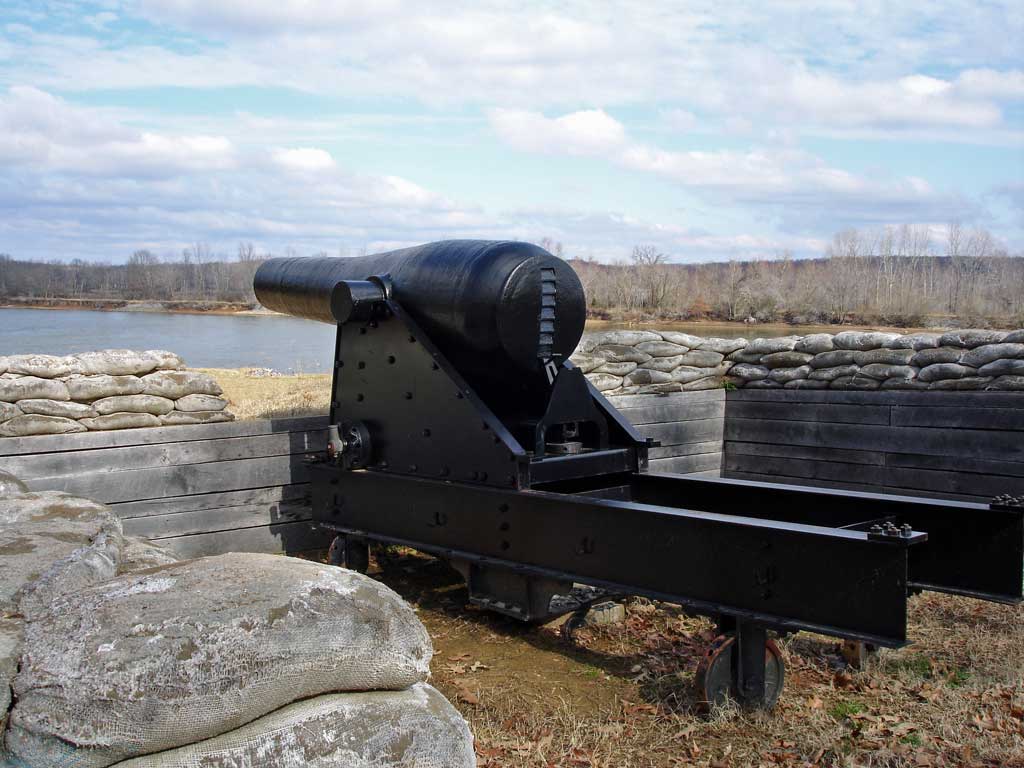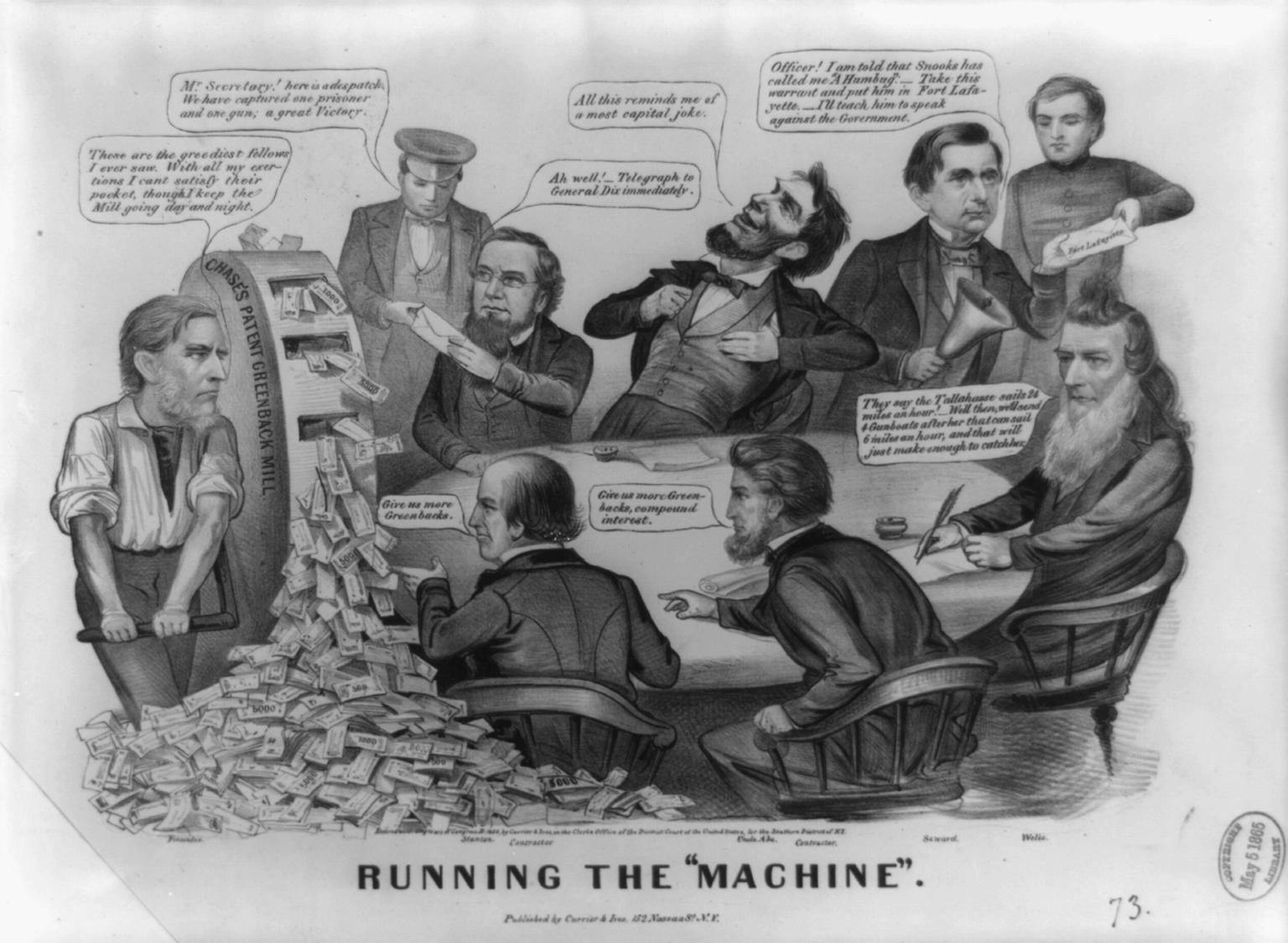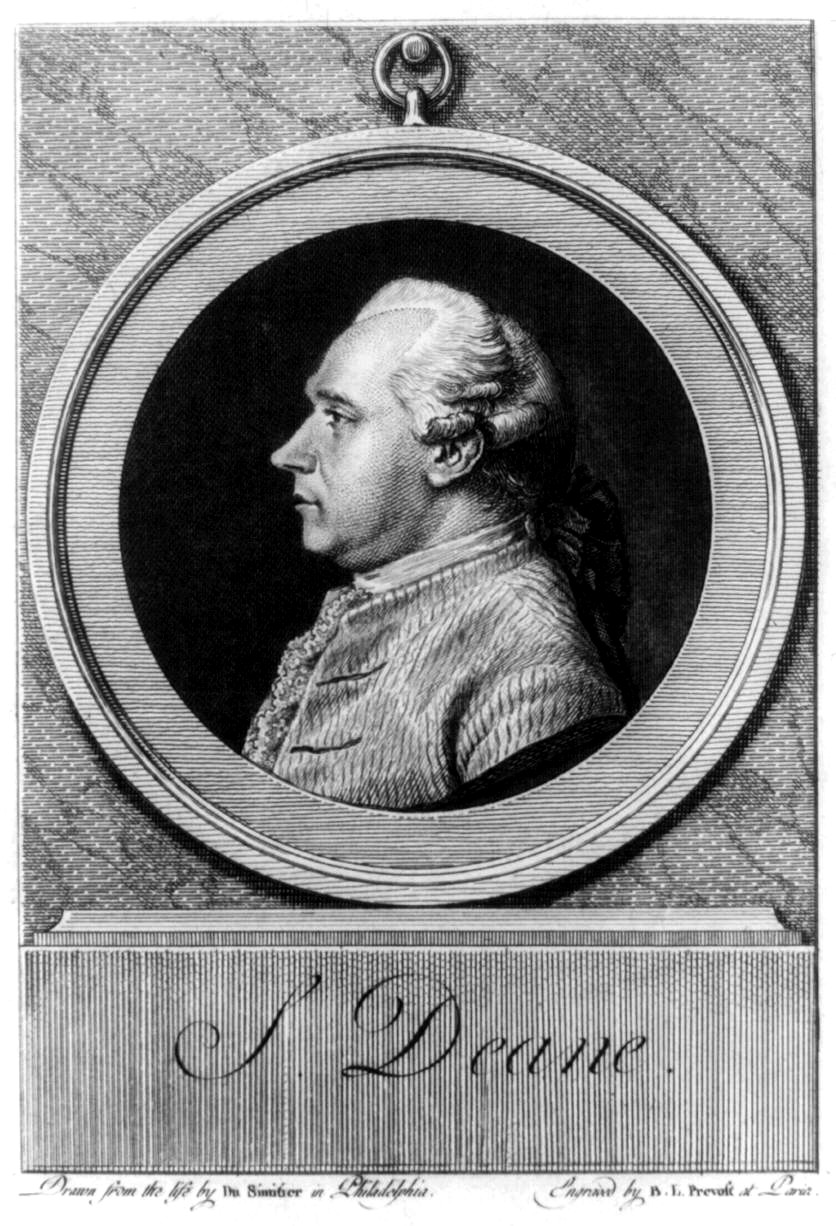|
Battle Of Port Royal
The Battle of Port Royal was one of the earliest amphibious operations of the American Civil War, in which a United States Navy fleet and United States Army expeditionary force captured Port Royal Sound, South Carolina, between Savannah, Georgia and Charleston, South Carolina, on November 7, 1861. The sound was guarded by two forts on opposite sides of the entrance, Fort Walker on Hilton Head Island to the south and Fort Beauregard on Phillip's Island to the north. A small force of four gunboats supported the forts, but did not materially affect the battle. The attacking force assembled outside of the sound beginning on November 3 after being battered by a storm during their journey down the coast. Because of losses in the storm, the army was not able to land, so the battle was reduced to a contest between ship-based guns and those on shore. The fleet moved to the attack on November 7, after more delays caused by the weather during which additional troops were brought into Fo ... [...More Info...] [...Related Items...] OR: [Wikipedia] [Google] [Baidu] |
American Civil War
The American Civil War (April 12, 1861 – May 26, 1865; also known by other names) was a civil war in the United States. It was fought between the Union ("the North") and the Confederacy ("the South"), the latter formed by states that had seceded. The central cause of the war was the dispute over whether slavery would be permitted to expand into the western territories, leading to more slave states, or be prevented from doing so, which was widely believed would place slavery on a course of ultimate extinction. Decades of political controversy over slavery were brought to a head by the victory in the 1860 U.S. presidential election of Abraham Lincoln, who opposed slavery's expansion into the west. An initial seven southern slave states responded to Lincoln's victory by seceding from the United States and, in 1861, forming the Confederacy. The Confederacy seized U.S. forts and other federal assets within their borders. Led by Confederate President Jefferson Davis, ... [...More Info...] [...Related Items...] OR: [Wikipedia] [Google] [Baidu] |
Battle Of Hatteras Inlet
The Battle of Hatteras Inlet Batteries (August 28–29, 1861) was the first combined operation of the Union Army and Navy in the American Civil War, resulting in Union domination of the strategically important North Carolina Sounds. Two forts on the Outer Banks (Fort Clark and Fort Hatteras) had been built by the Confederates, to protect their commerce-raiding activity. But these were lightly defended, and their artillery could not engage the bombarding fleet under Flag Officer Silas H. Stringham, commandant of the Atlantic Blockading Squadron, which had been ordered to keep moving, to avoid presenting a static target. Although held up by bad weather, the fleet was able to land troops under General Ben Butler, who took the surrender of Flag Officer Samuel Barron. This battle represented the first application of the naval blockading strategy. The Union retained both forts, providing valuable access to the sounds, and commerce raiding was much reduced. The victory was welcomed by ... [...More Info...] [...Related Items...] OR: [Wikipedia] [Google] [Baidu] |
South Atlantic Blockading Squadron
The Union blockade in the American Civil War was a naval strategy by the United States to prevent the Confederacy from trading. The blockade was proclaimed by President Abraham Lincoln in April 1861, and required the monitoring of of Atlantic and Gulf coastline, including 12 major ports, notably New Orleans and Mobile. Those blockade runners fast enough to evade the Union Navy could carry only a small fraction of the supplies needed. They were operated largely by foreign citizens, making use of neutral ports such as Havana, Nassau and Bermuda. The Union commissioned around 500 ships, which destroyed or captured about 1,500 blockade runners over the course of the war. Proclamation of blockade and legal implications On April 19, 1861, President Lincoln issued a ''Proclamation of Blockade Against Southern Ports'': Whereas an insurrection against the Government of the United States has broken out in the States of South Carolina, Georgia, Alabama, Florida, Mississippi, Louisiana, ... [...More Info...] [...Related Items...] OR: [Wikipedia] [Google] [Baidu] |
Atlantic Blockading Squadron
The Atlantic Blockading Squadron was a unit of the United States Navy created in the early days of the American Civil War to enforce the Union blockade of the ports of the Confederate States. It was formed in 1861 and split up the same year for the creation of the North Atlantic Blockading Squadron and the South Atlantic Blockading Squadron. History American Civil War Following President Abraham Lincoln’s proclamation of a blockade of Southern ports on April 19, 1861, the Navy Department found it necessary to subdivide the territory assigned to the Home Squadron. This resulted in the creation of the Coast Blockading Squadron and the Gulf Blockading Squadron in early May 1861. In orders sent on May 1, 1861 Secretary of the Navy Gideon Welles appointed Flag Officer Silas H. Stringham to command the Coast Blockading Squadron. Stringham received this order and took command on May 4, 1861. His new command was to be headquartered at Hampton Roads, Virginia, and was given responsibi ... [...More Info...] [...Related Items...] OR: [Wikipedia] [Google] [Baidu] |
Columbiad
The columbiad was a large-caliber, smoothbore, muzzle-loading cannon able to fire heavy projectiles at both high and low trajectory, trajectories. This feature enabled the columbiad to fire solid Round shot, shot or Shell (projectile), shell to long range of a projectile, ranges, making it an excellent seacoast defense weapon for its day. Invented by Colonel George Bomford, United States Army, in 1811, columbiads were used in seacoast defense in the United States, United States seacoast defense from the War of 1812 until the early years of the 20th century. Very few columbiads were used outside of the U.S. and Confederate Armies; nevertheless, the columbiad is considered by some as the inspiration for the later shell-only Paixhans gun, cannons developed by Frenchman Henri-Joseph Paixhans some 30 years later. History The first columbiads produced in 1811 had a diameter bore and fired a fifty-pound projectile. Although some Seacoast defense in the United States, Second System ... [...More Info...] [...Related Items...] OR: [Wikipedia] [Google] [Baidu] |
Francis Pickens
Francis Wilkinson Pickens (1805/1807January 25, 1869) was a political Democrat and Governor of South Carolina when that state became the first to secede from the United States. A cousin of US Senator John C. Calhoun, Pickens was born into the culture of the antebellum plantocracy. He became an ardent supporter of nullification of federal tariffs when he served in the South Carolina House of Representatives before he was elected to Congress and then the state senate. As state governor during the Fort Sumter crisis, he sanctioned the firing on the ship bringing supplies to the beleaguered Union garrison, and to the bombardment of the fort. After the war, it was Pickens who introduced the motion to repeal South Carolina's Ordinance of Secession, a short speech received in silence, in notable contrast with the rejoicing that had first greeted the Ordinance. Early life and career Pickens was born in Togadoo, St Paul's Parish, in Colleton County, South Carolina. His exact birth dat ... [...More Info...] [...Related Items...] OR: [Wikipedia] [Google] [Baidu] |
Brigadier General (United States)
In the United States Armed Forces, a brigadier general is a one-star general officer in the United States Army, Marine Corps, Air Force, and Space Force. A brigadier general ranks above a colonel and below a major general. The pay grade of brigadier general is O-7. It is equivalent to the rank of rear admiral (lower half) in the other United States uniformed services which use naval ranks. It is abbreviated as BG in the Army, BGen in the Marine Corps, and Brig Gen in the Air Force and Space Force. History The rank of brigadier general has existed in the U.S. military since the inception of the Continental Army in June 1775. To prevent mistakes in recognizing officers, a general order was issued on July 14, 1775, establishing that brigadier generals would wear a ribbon, worn across the breast, between coat and waistcoat, pink in color. Later, on June 18, 1780, it was prescribed that brigadier generals would instead wear a single silver star on each epaulette. At first, briga ... [...More Info...] [...Related Items...] OR: [Wikipedia] [Google] [Baidu] |
Fort Sumter
Fort Sumter is a sea fort built on an artificial island protecting Charleston, South Carolina from naval invasion. Its origin dates to the War of 1812 when the British invaded Washington by sea. It was still incomplete in 1861 when the Battle of Fort Sumter began the American Civil War. It was severely damaged during the war, left in ruins, and although there was some rebuilding, the fort as conceived was never completed. Since the middle of the 20th century, Fort Sumter has been open to the public as part of the Fort Sumter and Fort Moultrie National Historical Park, operated by the National Park Service. The building of Fort Sumter Named after General Thomas Sumter, a Revolutionary War hero, Fort Sumter was built after the 1814 Burning of Washington during the War of 1812 as one of the third system of U.S. fortifications, to protect American harbors from foreign invaders such as Britain. Built on an artificial island in the middle of the channel that provides Charlesto ... [...More Info...] [...Related Items...] OR: [Wikipedia] [Google] [Baidu] |
Samuel Francis Du Pont
Samuel Francis Du Pont (September 27, 1803 – June 23, 1865) was a rear admiral in the United States Navy, and a member of the prominent Du Pont family. In the Mexican–American War, Du Pont captured San Diego, and was made commander of the California naval blockade. Through the 1850s, he promoted engineering studies at the United States Naval Academy, to enable more mobile and aggressive operations. In the American Civil War, he played a major role in making the Union blockade effective, but was controversially blamed for the failed attack on Charleston, South Carolina in April 1863. Early life and naval career Du Pont was born at Goodstay, his family home at Bergen Point (now Bayonne), New Jersey, the fourth child and second son of Victor Marie du Pont and Gabrielle Joséphine de la Fite de Pelleport. His uncle was Eleuthère Irénée du Pont, the founder of E.I. du Pont de Nemours Company, which began as a gunpowder factory and today is a multinational chemical corporatio ... [...More Info...] [...Related Items...] OR: [Wikipedia] [Google] [Baidu] |
Gideon Welles
Gideon Welles (July 1, 1802 – February 11, 1878), nicknamed "Father Neptune", was the United States Secretary of the Navy from 1861 to 1869, a cabinet post he was awarded after supporting Abraham Lincoln in the 1860 election. Although opposed to the Union blockade of Southern ports, he duly carried out his part of the Anaconda Plan, largely sealing off the Confederate coastline and preventing the exchange of cotton for war supplies. This is viewed as a major cause of Union victory in the Civil War, and his achievement in expanding the Navy almost tenfold was widely praised. Welles was also instrumental in the Navy's creation of the Medal of Honor. Early political career Gideon Welles, the son of Samuel Welles and Ann Hale, was born on July 1, 1802, in Glastonbury, Connecticut. His father was a shipping merchant and fervent Jeffersonian; he was a member of the Convention, which formed the first state Connecticut Constitution in 1818 that abolished the colonial charter and offi ... [...More Info...] [...Related Items...] OR: [Wikipedia] [Google] [Baidu] |
United States Secretary Of The Navy
The secretary of the Navy (or SECNAV) is a statutory officer () and the head (chief executive officer) of the United States Department of the Navy, Department of the Navy, a military department (component organization) within the United States Department of Defense. By law, the secretary of the Navy must civilian control of the military, be a civilian at least five years removed from active military service. The secretary is appointed by the President of the United States, president and requires confirmation by the United States Senate, Senate. The secretary of the Navy was, from its creation in 1798, a member of the president's United States Cabinet, Cabinet until 1949, when the secretary of the Navy (and the secretaries of the United States Secretary of the Army, Army and United States Secretary of the Air Force, Air Force) were by amendments to the National Security Act of 1947 made subordinate to the United States Secretary of Defense, secretary of defense. On August 7, 202 ... [...More Info...] [...Related Items...] OR: [Wikipedia] [Google] [Baidu] |
Blockade Strategy Board
The Blockade Strategy Board, also known as the Commission of Conference, or the Du Pont Board, was a strategy group created by the United States Navy Department at outset of the American Civil War to lay out a preliminary strategy for enforcing President Abraham Lincoln Abraham Lincoln ( ; February 12, 1809 – April 15, 1865) was an American lawyer, politician, and statesman who served as the 16th president of the United States from 1861 until his assassination in 1865. Lincoln led the nation thro ...'s April 19, 1861 '' Proclamation of Blockade Against Southern Ports''. Enforcing this blockade would require the monitoring of of Atlantic Ocean, Atlantic and Gulf of Mexico, Gulf coastline held by the Confederate States of America, including 12 major ports, notably Port of New Orleans, New Orleans and Port of Mobile, Mobile. The group, consisting of: Samuel Francis Du Pont, who acted as chairman; Charles Henry Davis; John Gross Barnard; and Alexander Dallas Bache, ... [...More Info...] [...Related Items...] OR: [Wikipedia] [Google] [Baidu] |








